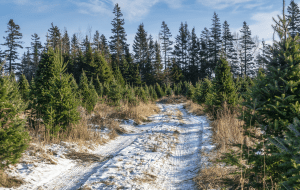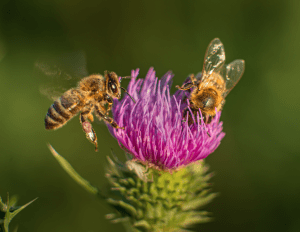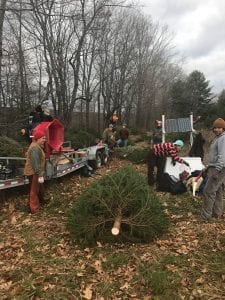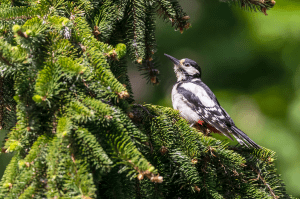Exportation of Nova Scotia Christmas trees and greenery products is a fundamental portion of the industry.
The export of trees and greens at this time of year helps the local retailer’s and the U-cut operator’s markets by reducing the number of locally available trees on the street corners of every town and city. Without exporters, these extra trees would flood the market and force the price of the whole down due to excess supply. The export business maintains local tree prices by reducing the number of trees at home.
Over time, this helps to establish and raise prices for local growers.
Our industry by nature is cyclical; we are seeing better times now and anticipate them for the future. However, there is a need for exporters to protect themselves going forward in the business and it is in the best interest of all growers to support them. With a growing industry, we now have an opportunity to outline our expectations for exported / buyer agreements.
It is important to ensure that buyer contracts, whether verbal or preferably in writing, are understood explicitly by both the exporter and the buyer. When putting together these contracts, ensure that future controversy is avoided by referring to this Export / Buyer Contract checklist:
- The buyer’s expectations for tagging of the trees and/or load. Tagging requires time and extra people to complete; therefore, it should be known ahead of time what the expectation is, especially if the cost is to be absorbed by the exporter.
- The number of trees agreed upon for each load. If the contract outlines a specified number of trees per load, that quantity of trees will be loaded, regardless of the capacity of the truck or container.
- The loading date(s). Determine the loading date(s) and hold the buyer accountable to that date. It may even be necessary to set a deadline for rescheduling (for example, 48 hours notice from the buyer) to avoid having a loading crew ready without a container to load.
- A clause on the rescheduling of loading dates. This clause should include what conditions are acceptable for a rescheduling request from both the buyer and the exporter. For example, if bad weather prevents the exporter from preparing for a shipment, adequate notice should be given to the buyer. Similarly, if bad weather prevents the buyer from picking up a shipment, the same notice should be given to the exporter.
- Handling expectations. If the buyer is expecting bundles of trees and or greenery, the exact number per bundle should be relayed in the contract and agreed upon early on. The handling and re-handling of products would be more efficient if all the requirements were upfront and clear to everyone.
- The price. The price for the products as explicitly written in the contract should be outlined in the contract. This allows the exporter to account for associated cost of handling and tagging as required by the buyer and addressed in the contract.
This checklist is intended to remind exporters of the details that should go into a planned contract to prevent issues during the busiest time of year. The incidences reported are not inclusive of all details that should be considered but are all very possible. In years past exporters competed to market their products, however, as the industry strengthens, we have an opportunity to set our expectations for buyers.
Exporters should focus on creating a contract document that defines and limits their responsibilities to the buyer and holds both the exporter and the buyer accountable to the agreement as set out in the contract. These are not all the incidences that have occurred over the years for growers, and I acknowledge that there are many more.
Adapted from CTCNS Journal Contribution by Randy Naugler.
You can learn more about transportation and logistics at The Balsam Fir Forum.







